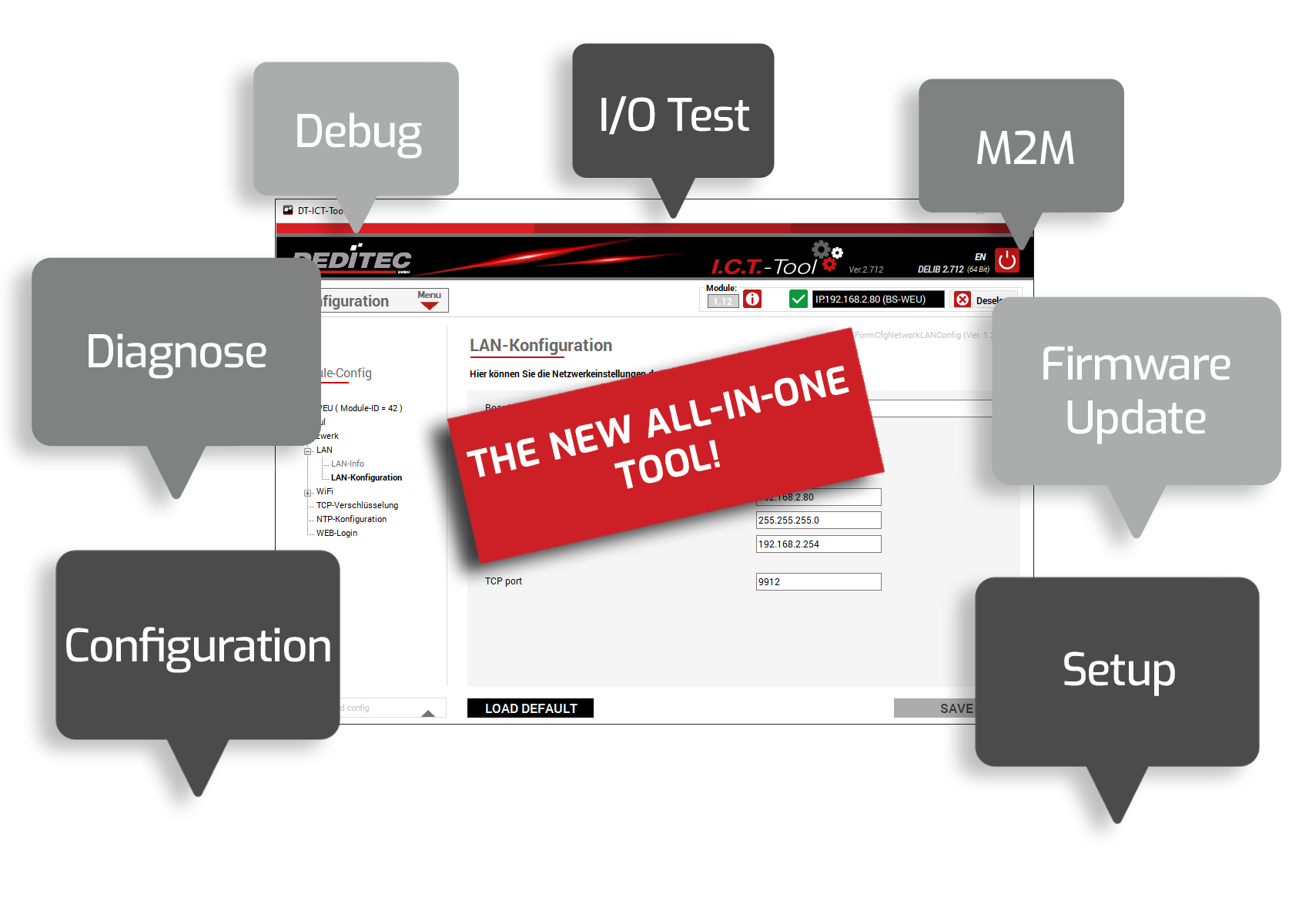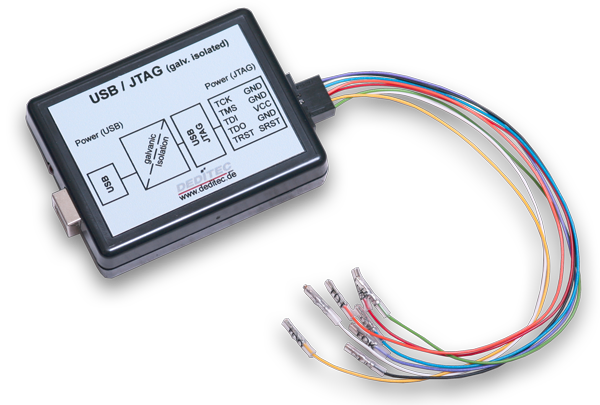Highlights
- USB 2.0 / USB 1.1 interface
- Supply voltage: +5V (powered via USB bus)
- Voltage level JTAG device: 1.2V – 5V
- Galvanic isolation (USB/JTAG)
- Plug & Play
- In-system flash programming (FPGA/CPLD)
In-System Flash Programming (FPGA/CPLD) via USB Interface with Galvanic Isolation
Due to numerous customer requests, the company DEDITEC from Brühl now also offers a USB module for in-system flash programming.
With the USB-JTAG, users have the ability to program, debug, or test ICs, FPGAs, CPLDs, and processors directly within the circuit. This is implemented via the JTAG protocol (Joint Test Action Group), which complies with the IEEE 1149.1 standard. The voltage level of the JTAG device to be programmed ranges from 1.2V to 5V. The connection to the PC is made via the USB bus (USB 2.0 / 1.1 interface). The JTAG device is connected via a 10-pin download connector.
A key feature of this module is the galvanic isolation of signals between the USB and JTAG sides.
The USB-JTAG uses the FTDI chip “FT2232”, making it compatible with all device programming software tools that support this chip (e.g., “ispVM System” from Lattice).
The module is powered via the USB port of the PC. All electronics are housed in a compact enclosure with dimensions of 80mm x 61mm x 22mm (L x W x H).








